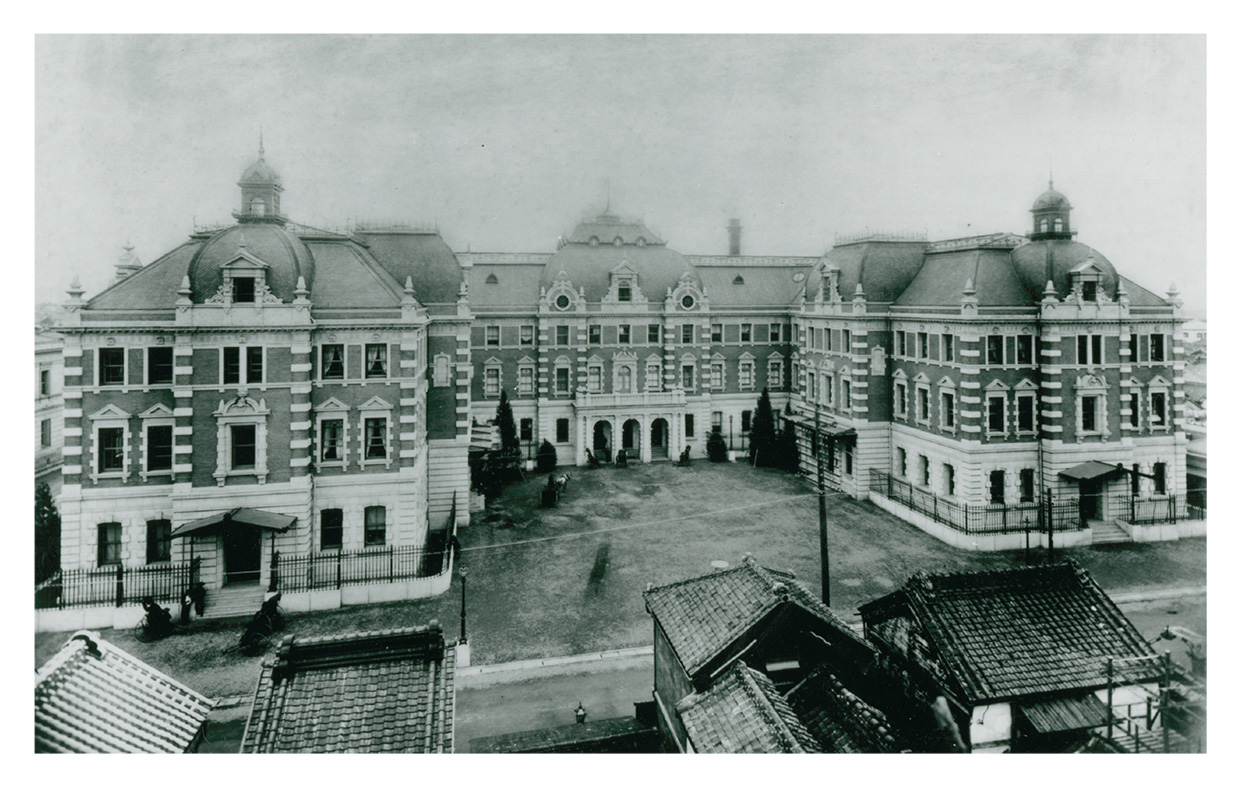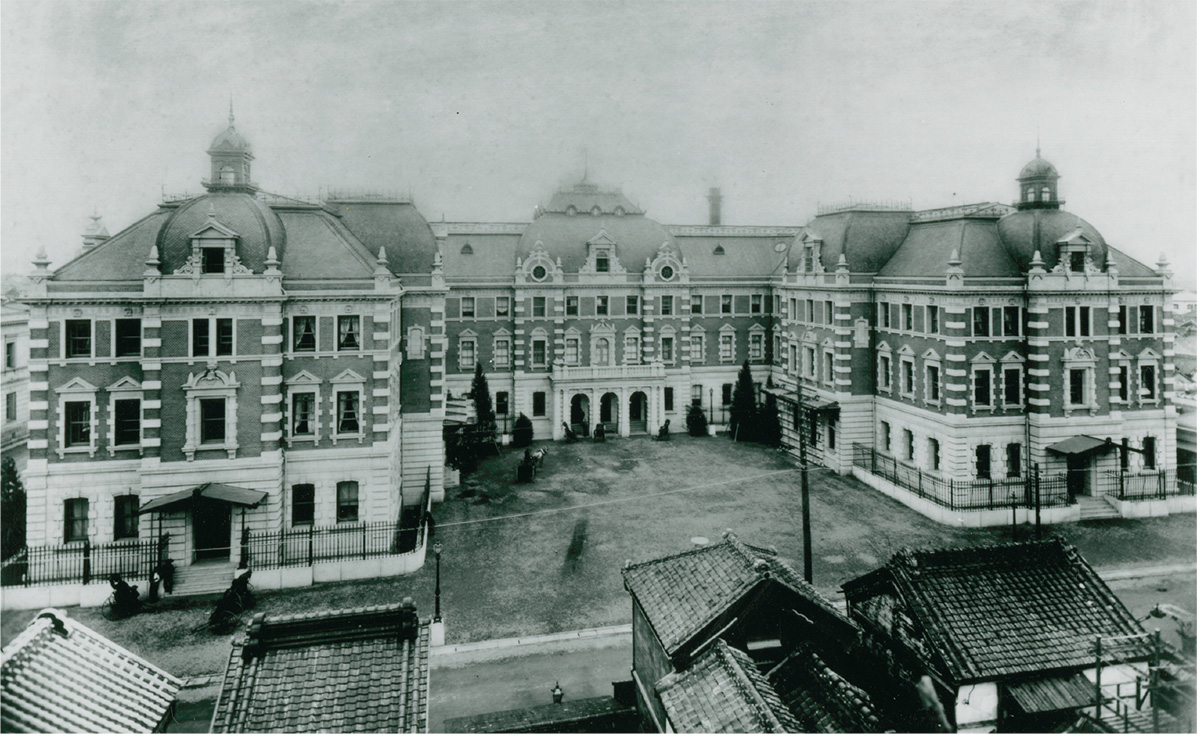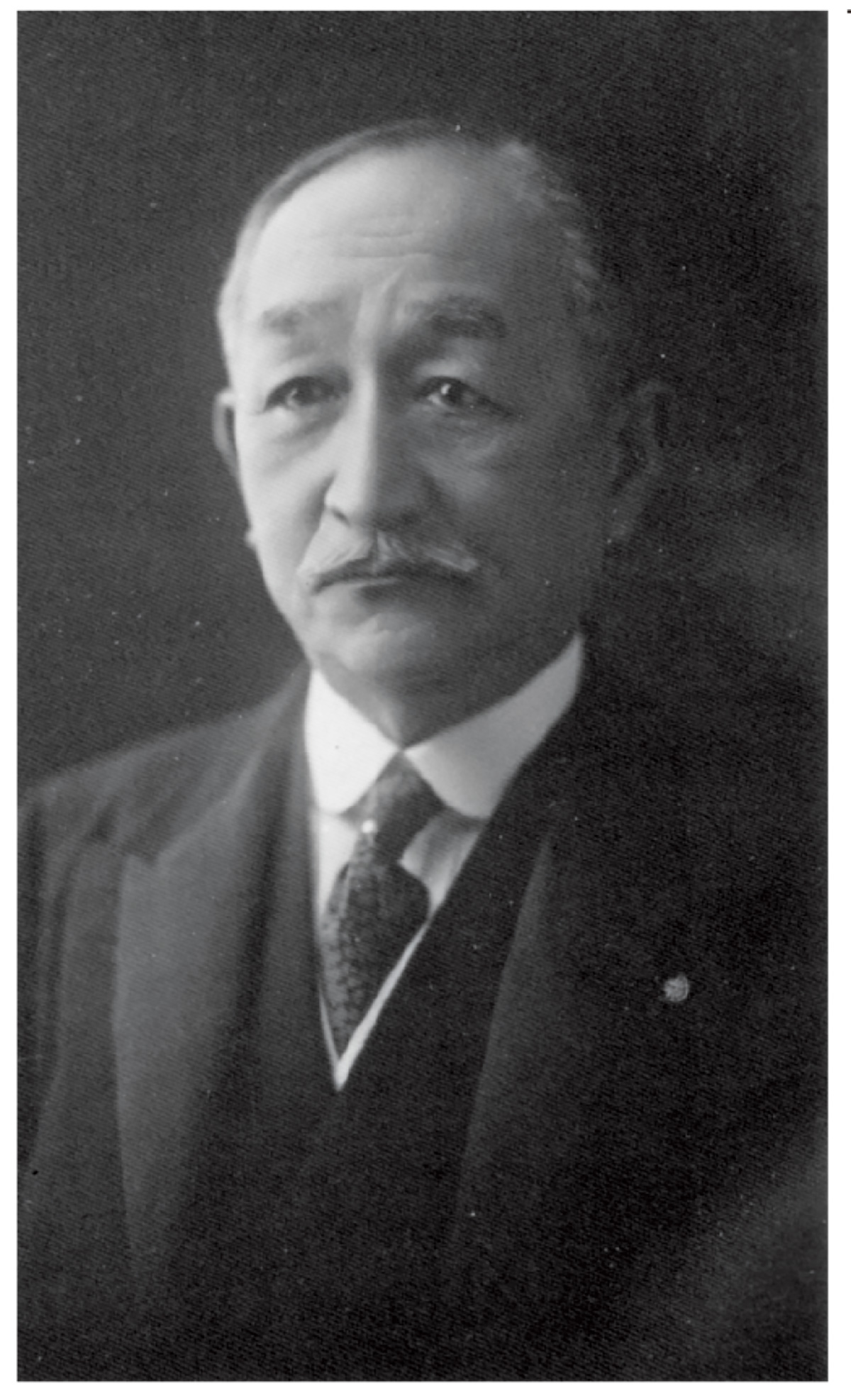38 Establishment of Mitsui Gomei Kaisha

An Exploratory Process
Going into the 1890s, Mitsui undertook a reorganization of its branch offices (referring to its operating subsidiaries as “branch offices”), along with the establishment and restructuring of various organizations at its central offices.
In line with the partial enactment of the Commercial Code, in July 1893 the enterprises that had developed into the three pillars of Mitsui’s business-banking, trading and mining-were organized into partnerships, with the heads of each of the Mitsui families as the investing partners.
The Mitsui Family Meeting was established in November of that year, and the Mitsui Motokata, formerly the Mitsui-gumi, was set up to serve as its administrative body (it was later renamed the Mitsui Family Meeting Secretariat with the enactment of the Mitsui’s House Constitution in 1900). The Mitsui Family Meeting consisted of the family heads as regular members, with retired family members, presumed adult heirs and those “specially recommended as members” (in practice, executives of the branch offices) as attending members. It served as the highest decision-making body for the Mitsui Family’s affairs and businesses.
The venue for substantial decision-making regarding the business divisions transitioned between 1896 to 1905 from the Mitsui Trading Company Board, to the Mitsui Branch Executive Committee, and then to the administrative department of the Mitsui Family Council Secretariat. By the time this administrative department was established (headed by Takakage, the eighth generation of the Koishikawa family, with Masuda Takashi as deputy head), an organization was formed that could bring a comprehensive perspective to drafting and advancing unified policies across all of Mitsui’s businesses.
These rapid changes were part of a process of exploring the most appropriate solutions to various relationships: between family affairs and business; between the system of shared property and the rights of each family; between the family and professional managers; between individual branch offices and Mitsui as a whole; and between ownership and business oversight. This process was carried out in alignment with the Mitsui’s House Constitution (→37), while also keeping an eye on the establishment and enacting of the Civil Code and Commercial Code.
The culmination of this process was the establishment of Mitsui Gomei Kaisha on October 11, 1909. From then on this structure was solidified, and family affairs would be overseen by the Mitsui Family Meeting, while all of Mitsui’s business operations would be managed by Mitsui Gomei Kaisha.
Mitsui Gomei Kaisha: A Holding Company
Mitsui Gomei Kaisha was a holding company whose purpose was to own shares in and oversee Mitsui’s various subsidiary companies. Shares owned by the firm as of the end of January 1910, shortly after its establishment, are as listed in the table. Among its direct subsidiaries, Mitsui Bank and Mitsui Bussan were each reorganized as stock companies at the same time as the establishment of Mitsui Gomei Kaisha. Toshin Soko was spun off from the warehouse division of Mitsui Bank and became an independent corporation.
Note that the name of Mitsui Mining does not appear in the table. This is because, formally, Mitsui Gomei Kaisha was established by changing the articles of incorporation and the name of the Mitsui Mining Gomei Kaisha, at which time Mitsui Mining was made the mining division of Mitsui Gomei Kaisha. Two years later, in 1911, the mining division was spun off as Mitsui Mining Co., Ltd. (100% owned by Mitsui Gomei Kaisha).
Investing Partners
Mitsui Gomei Kaisha was an unlimited liability company with the heads of the 11 Mitsui families as investing partners. The president of the company was Takamine, 10th generation of the Kita family (→Fig. 38b). The articles of incorporation stipulated the following regarding the partners: The ownership share of the 50 million yen in capital was to be 23% for the head of the Kita family, 10.5% for each of the other main family heads, and 3.9% for the heads of each of the associate families (this followed the division of family assets as determined by the Mitsui’s House Constitution). When a partner lost their status as head of a family, their rights and obligations would be inherited by the legal successor as heir to that family. The partners were prohibited from transferring or pledging as collateral all or part of their ownership shares to others.
These provisions of the articles of incorporation, combined with the Mitsui’s House Constitution’s rule allowing confiscation of business assets as a penalty in the event of a family member’s expulsion, helped maintain Mitsui’s system of shared family property.
Closely Held Ownership and Realization of Limited Liability
The Mitsui Gomei Kaisha, which limited its partners to the heads of the various Mitsui family branches, established a system by which the Mitsui family had closely held ownership of the business assets through its 100% ownership of the shares of its direct subsidiaries. Meanwhile, the incorporation of these direct subsidiaries made it possible to limit the liability of the business organization. This method of ownership and supervision of subsidiary businesses through a holding company was proposed by Masuda Takashi (→30), who was inspired by the example of Andrew Carnegie, which he observed during a 1907 visit to the United States and Europe.

Construction on the former Mitsui Main Building began in October 1896 and was completed in October 1902. Designed by Yokogawa Tamisuke, the building had four above-ground floors (including an attic) and one basement floor, with a total floor area of approximately 9,200 square meters. Japan’s first steel-reinforced concrete structure, the exterior featured granite (sourced from Bitchu and Tsukuba) and specially crafted decorative bricks (made in a kiln built in Fukagawa). More than 2,000 tons of steel from the Carnegie Steel Company in the U.S. were said to have been used. The headquarters of the Mitsui Family Meeting, Mitsui Gomei Kaisha and the firm’s direct subsidiaries were located here. During the Great Kanto Earthquake of 1923, the building’s interior suffered a fire, and documents stored inside were destroyed. As a result, there are few surviving records today for any of the companies covering the period from around the establishment of Mitsui Gomei Kaisha through the time of the earthquake. Following the earthquake, the former Mitsui Main Building was rebuilt, becoming the current Mitsui Main Building (→44).
Table: Shares owned by Mitsui Gomei Kaisha (January 31, 1910)
| Number of shares | Market price (yen) | ||
| Direct subsidiaries | Mitsui Bank* | 200,000 | 20,000,000 |
| Mitsui Bussan* | 200,000 | 20,000,000 | |
| Toshin Soko* | 7,000 | 700,000 | |
| Collateral companies | Shibaura Seisakusho* | 20,000 | 1,000,000 |
| Oji Seishi | 88,015 | 1,272,420 | |
| Onoda Cement Manufacturing | 2,500 | 93,750 | |
| Sakai Celluloid* | 29,520 | 767,350 | |
| Others | Toa Kogyo | 1,600 | 40,000 |
| Yokohama Densen | 1,000 | 50,000 | |
| Total | 43,923,520 |
* Indicates companies for which Mitsui Gomei Kaisha owns all of the shares. However, the entirety of Toshin Soko shares is a combination of shares owned by Mitsui Bank, Mitsui Bussan and the Mitsui families.
Oji Seishi shares are the total of old and new shares.

Eighth son of Takayoshi, eighth generation head of the Kita family (→24). Became the adopted son of his eldest brother, Takaaki. Inherited the family estate in 1885, along with the Hachiroemon name, becoming the 10th generation head of the Kita family. Given the title of baron in 1896. He was the first president of Mitsui Gomei Kaisha, forming a renowned partnership with managing director Dan Takuma. He retired in 1933 at age 77 (→45).
